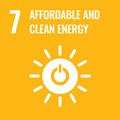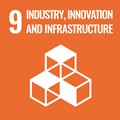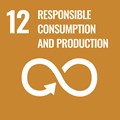The volume of carbon emissions are expected to be avoided from vessels equipped with Svanehøj fuel pumps delivered in 2023.
The Product Impact Assessment shows the total contribution to decarbonization from the supply of DW Fuel Pumps to operating vessels in 2023. The calculation is based on vessel type, size, and fuel type as stated in our reference list of delivered fuel pumps, combined with vessel specifications, data, and voyage assumptions from Clarksons Research, the world's largest shipping services provider, and carbon (CO2) emission factors from European Union regulations. As vessels, and Svanehøj’s pump solutions, typically have a lifetime of 20-35 years, the assessment is based on a 25-year lifetime period.
Currently, we can conduct calculations for 65% of our reference list matched with the relevant vessel specification, data, and voyage assumptions. Consequently, we have chosen to extrapolate the result for our complete reference list. The missing data will be available in the future, and we will update our product impact assessment on a yearly basis with the newest and most applicable data sets.
LNG and LPG fueled vessels ordered in 2023 with Svanehøj DW Fuel Pumps are expected to achieve an overall lifetime (25 years) saving of 33.96M tons of CO2 compared to similar vessels with HFO propulsion.
The result in 2022 was 38.8M tons of CO2. Despite a 30% increase in fuel pump sales, the overall contribution to decarbonization from our DW fuel pumps decreased from 2022 to 2023.
This decline is attributable to a change in the composition of ship types, specifically, LPG carriers, which have a relatively low reduction potential from fuel transition, and container vessels, which have a relatively high reduction potential. Consequently, in 2023, fuel pumps for LPG carriers constituted a more significant proportion of total sales than in 2022, while fuel pumps for container vessels comprised a smaller proportion.
The 33.96M tons of CO2 that our fuel pumps prevent from being released into the atmosphere is equivalent to the CO2 emissions from 29 container vessels (15.000 TEU) running on HFO and operating for 25 years (350 operating days per year). With approx. 6,000 container vessels globally, the transition towards greener fuels in shipping is a key enabler in reducing carbon emissions.
The current calculations are based on LNG/LPG. Given that DW fuel pumps are fully compatible with e-fuels such as green ammonia, methanol, and hydrogen, the impact on CO2 reduction will rise significantly according to the development and supply of e-fuels.


 LPG Carriers
LPG Carriers
 Product and Chemical Carriers
Product and Chemical Carriers
 LNG and future fuel capable vessels
LNG and future fuel capable vessels
 LNG Carriers and FSRU'S
LNG Carriers and FSRU'S
 Offshore
Offshore













